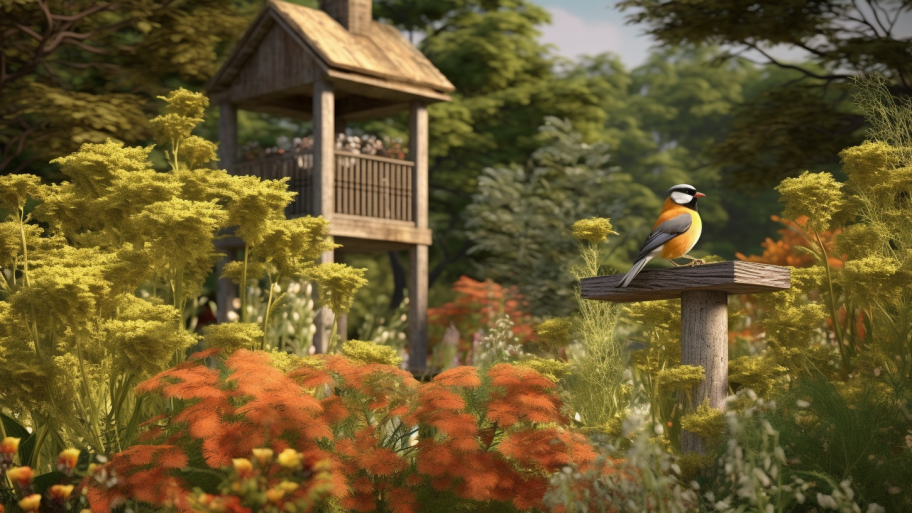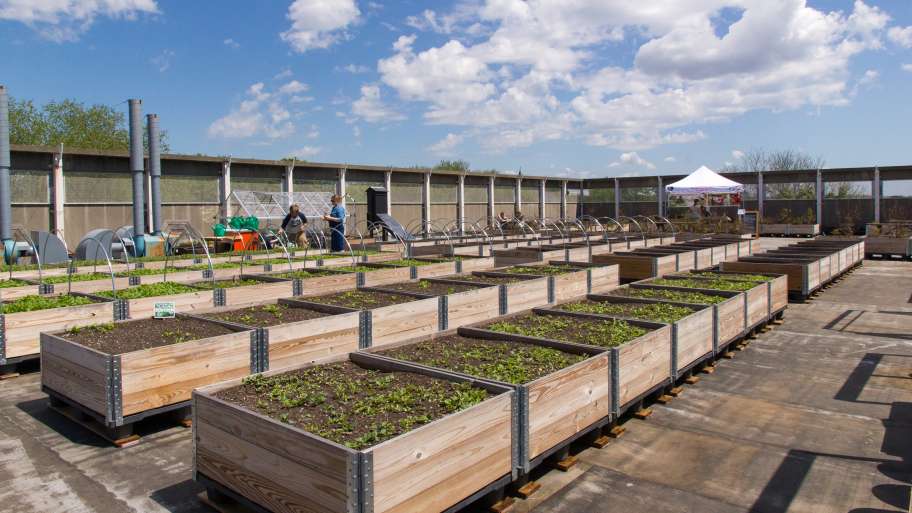Welcome back to our rooftop gardening series! In the previous article, we introduced you to the basics of creating a rooftop garden, including assessing your space, selecting containers and growing medium, and choosing suitable plants. Now that you’re familiar with the fundamentals, it’s time to dive into designing and installing your very own rooftop garden paradise.
Planning Your Rooftop Garden Layout
A well-designed layout is crucial for a successful rooftop garden. Start by sketching out your rooftop space, noting the locations of doors, vents, and other structures. Consider the following factors when planning your layout:
- Sunlight exposure: Arrange your plants according to their sunlight requirements. For instance, place sun-loving plants like tomatoes and peppers in the sunniest spots, and provide some shade for those that prefer less sun, like leafy greens.
- Wind protection: Use taller plants, trellises, or screens to create windbreaks and protect more delicate plants from wind damage.
- Accessibility: Ensure you can easily access all plants for watering, pruning, and harvesting. Leave enough space between containers for comfortable movement.
- Aesthetics: Create visual interest by combining plants of varying heights, colors, and textures. Arrange your containers in clusters, rows, or other patterns that appeal to your personal style.
Installing the Rooftop Garden Infrastructure
Before you start placing containers and planting your garden, you’ll need to prepare the rooftop surface. Here are some steps to follow:
- Clean the rooftop: Remove any debris and ensure the surface is clean and free of any potential hazards.
- Waterproofing: Consider adding a waterproof membrane to protect your roof from moisture damage. Consult a professional if you’re unsure about the best method for your rooftop.
- Flooring: Install a rooftop flooring system, such as interlocking deck tiles or rubber pavers, to create a stable, comfortable surface for walking and to protect the roof membrane.
- Weight distribution: Use specially designed rooftop garden platforms or place containers on pallets or wooden planks to distribute weight evenly and prevent damage to the roof surface.
Incorporating Irrigation and Drainage Systems
Proper irrigation and drainage are vital for a thriving rooftop garden. Consider installing a drip irrigation system to deliver water directly to your plants’ roots, minimizing water waste and ensuring consistent moisture. Timers and moisture sensors can help automate the watering process and maintain optimal soil moisture levels.
Incorporate drainage saucers or trays beneath your containers to collect excess water and prevent it from pooling on your rooftop. Ensure the drainage system directs water away from the building to avoid structural damage.
Adding Aesthetic and Functional Elements
To elevate your rooftop garden to the next level, incorporate additional elements that enhance both aesthetics and functionality:
- Seating areas: Create comfortable spaces to relax and enjoy your garden, such as benches, chairs, or even a hammock.
- Vertical gardening: Utilize trellises, wall planters, or hanging baskets to maximize your growing space and add visual interest.
- Lighting: Install solar-powered lights or string lights to illuminate your garden at night and create a warm, inviting atmosphere.
- Art and décor: Personalize your garden with decorative items like sculptures, wind chimes, or birdhouses.
With a well-designed and expertly installed rooftop garden, you’re on your way to enjoying your very own urban oasis. However, the journey doesn’t end here! In our final article of the series, “Skyward Sanctuary: Nurturing and Sustaining Your Rooftop Haven,” we’ll share essential tips for maintaining a healthy and sustainable rooftop garden. Onwards!




